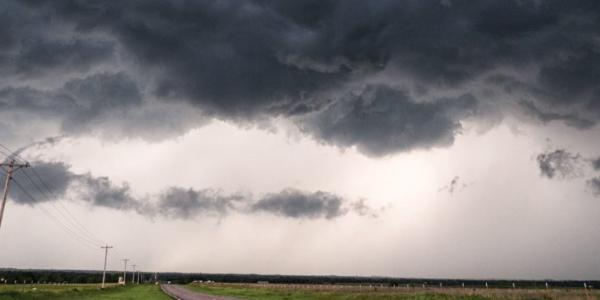Roofing Contractors Responding After the Storm

By John Kenney, Cotney Consulting Group.
Here are what plans you should have in place for this hurricane season.
As Ian passed through Florida, then regrouped off the east coast and headed to South Carolina, it reminded us in the industry that emergencies and disasters can strike anywhere, anytime, causing damage to life and property. That is why contractors should plan for workplace emergencies at their company and job sites to minimize employee injuries/illnesses and property loss when an emergency strikes. Hopefully, you had your emergency plan in place for your company and were ready to respond well before the disaster hit. In an upcoming article, we will follow up and discuss preparing a proper OSHA compliance "Emergency Preparedness Standard Operations Procedure" for your company and job site for all-natural disasters. But now, we will discuss some items you can implement today, to help you respond to employee and client needs during recovery after the storm.
First and foremost, check in on your team. Make sure your employees and their families are taken care of and don't have any immediate needs your company can assist with. If they do, get your team squared away first. You can expect your employees to focus on job site and client recovery needs if they have to worry about their families.
A crisis communication plan
It is vital that you have a procedural plan to follow for communications. Your team leaders must be prepared to know what and what not to say. They must be ready to meet and encounter emergency response personnel when trying to enter areas to access damages or make repairs.
It would be best if you considered covering these items in your plan:
- The media
- They will be around the storm-damaged areas for some time – you should cover who can and can not speak to the media from your team and what they should say if encountered.
- Updating company senior management
- Cover how your field response teams will keep you updated
- Meet with employees and discuss the plans and responses you will be providing
- Documentation
- For every site you visit, you need to have full photos and descriptions of damages and any emergency repairs you may make.
- Chain of command for updating your clients
- How and when will you keep your clients updated? You do not want multiple people updating the same client. Who is in charge of that?
A roofing contractor must be able to respond promptly, accurately and confidently during an emergency in the hours, days, and weeks that follow. Many different parties must be reached with information specific to their interests and needs during emergencies, and the perception of how your company handles the response can positively or negatively impact the business's image.
Responding
Safety must be the priority for a contractor returning to access damages to one of their sites or responding to clients' calls for emergency repair services. Even if your job site looks intact, storm damage could leave your pre-existing safety barriers and precautions compromised. Make sure everything is still in place and secured.
Other hazards you may encounter are unstable structures, downed power lines that may still be energized, unsafe deck conditions and many others. Some other hazards to educate your team on that we don't always consider after a storm like Ian are:
- Contaminated flood water
- Water after a flood can be contaminated with sewage containing infectious bacteria. It can also have toxic chemicals that can cause headaches and skin rashes. Appropriate personal protective equipment (PPE) and good hygiene can help keep workers safe.
- Mosquitoes
- With all the standing water left around after a hurricane, the mosquito population will multiply and thrive in the upcoming weeks and months.
- Fire ants
- If you have encountered this type of ant, you know they aggressively bite, which stings a lot. During a storm, they link together to form a floating colony and can emerge from anywhere to avoid the high waters. Fire ants are not deterred by insect repellant and should be avoided by your workers.
- Others
- Hurricanes can displace other wildlife like snakes, alligators or household pets. Be on the lookout for any unwanted guests around your work site.
- Stress
- Finally, remember the stress your team is under. Long workdays spent surrounded by destruction in communities can be highly stressful for workers. Make sure you look for these signs and offer help and resources to anyone who may need them.
Once your operations are back to normal, make sure you review and update your company's disaster recovery plan while this event is still fresh on your mind. Discuss what worked and didn't work during the response to this storm. You should request feedback from your leadership team and key employees and then provide the updated plan to everyone in your organization. This will ensure you're ready for the next disruptive event, which hopefully will be a long time away.
Learn more about Cotney Consulting Group in their directory or visit www.cotneyconsulting.com.
About John Kenney
John Kenney is the Chief Executive Officer at Cotney Consulting Group. Prior to starting Cotney, John had 45 years of experience in the construction industry. John began his career by working as a roofing apprentice at a family business in the Northeast. Because of his skill and hard work, he progressed from roofing laborer to foreman, estimator, chief estimator, Vice President, and Chief Operating Officer with his various companies. John has worked for multiple Top 100 Roofing Contractors and is intimately familiar with all aspects of roofing production, estimating, and operations. In his last role, John was responsible for the daily operations and performance of a large commercial roofing contractor. During his tenure, John ran business units associated with delivering excellent workmanship and unparalleled customer service while ensuring healthy net profits for his company.






















Comments
Leave a Reply
Have an account? Login to leave a comment!
Sign In